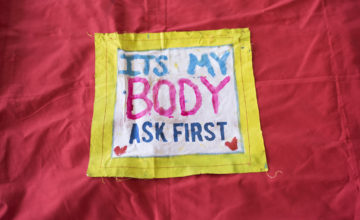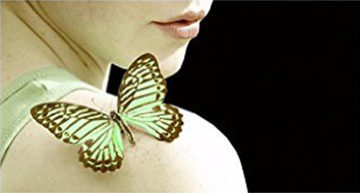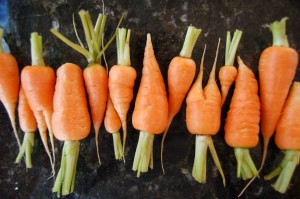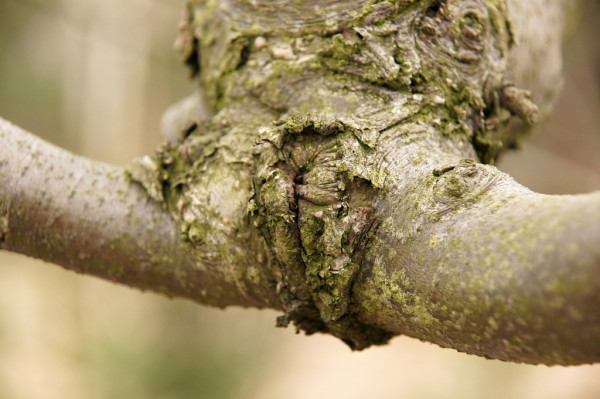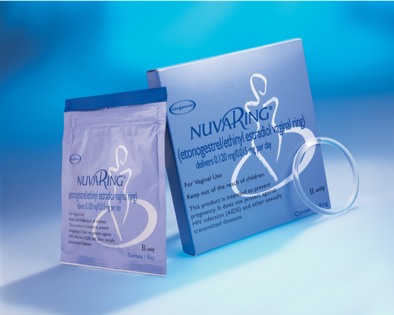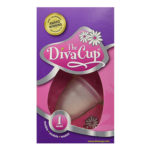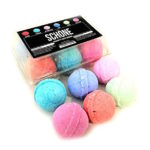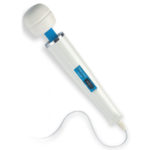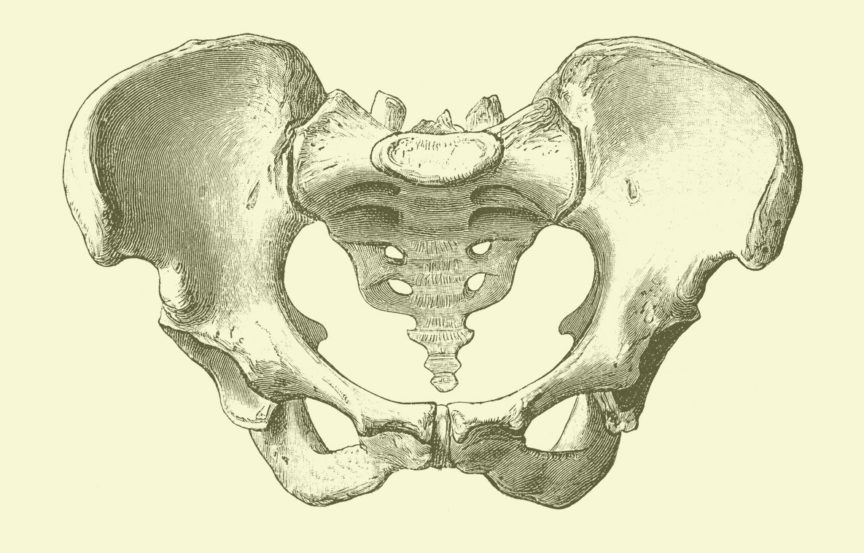
There’s a lot more than meets the eye when it comes to female sexual anatomy: the waters of that pleasure system run way deep. These parts are not inferior, miniature versions of the male sexual anatomy, but rather equitable, albeit more internal, sexual structures that enjoy stimulation just as much. They simply need the right kind of stimulation. Understanding those structures is the first step in learning how to provide it.
Please note: Having certain anatomical parts does not determine one’s sexual orientation or gender identity. And there are certainly exceptions to the biological sex binary, as with intersex people. The below applies to the two typical categories of sexual anatomy — male and female — while trying not to make assumptions about a) who might be interacting with such anatomy or b) how the owner of such anatomy might identify. We are also only focusing on the bits traditionally associated with sexual stimulation and pleasure (the clitoris, labia, etc) and not reproduction (ovaries, fallopian tubes, etc).
clitoris, a.k.a. the female penis: Contrary to popular belief, the clitoris is more than just that little nubbin you see or feel protruding near the top of the labia – that’s just the tip of the iceberg. No, the clitoris is actually a complex organ of nerve-rich erectile tissue (just like the penis) extending throughout the genital area. We’re talking four inches long (one inch shy of the average penis, but proportional to her body size) in the shape of a wishbone. During arousal, this tissue becomes engorged and erect, just like the penis – it’s just more difficult to notice in female anatomy because most of the erection occurs internally. Another difference in erections: a clitoris’s has a much better chance of lasting long after orgasm, hence an ability to achieve subsequent orgasms more easily than a penis.
clitoral head, tip, or glans: The little “handle” of the wishbone which protrudes externally at the junction where the top of the labia connect – what most people usually think of when they think “clitoris”. Some clitoral heads extend out like an erect nipple, while shyer ones hide under the hood. (The more aroused its owner becomes, the more retracted the clitoral head may become as the ligament supporting it tightens with sexual tension.) One of the best ways to arouse the entire clitoris is to provide stimulation to this head/tip, not only because it’s external, but because it has more nerve endings than any other part of the body, male or female.
clitoral hood: The female equivalent of foreskin: the clitoral shaft runs under it and the clitoral head sticks out of it. The hood is created by the junction of the outer edges of the inner lips meeting above the clitoral head.
clitoral shaft: You can often feel the short (i.e. less than an inch long) shaft of the clitoris underneath the hood as it burrows into the genitalia, first in the direction of the pubic mound, before it turns sharply back downward and splits into two long wishbone legs.
clitoral legs: The two slim prongs of the clitoral wishbone which run underneath the labia and flank either side of the urethra, the urethral sponge, and the vagina. Like the clitoral head and shaft, the legs are made of erectile tissue which stiffens during arousal.
clitoral bulbs: In addition to the wishbone, there are two eggplant-shaped bulbs that run along the inside of the clitoral legs, beneath the inner labia and around the sides of the urethra, the urethral sponge, and the vagina. This erectile tissue also becomes engorged during arousal, puffing up even more than the legs, and causing the inner labia to balloon. For more, see “10 Things You Should Know About the Clitoris.”
outer labia or lips, a.k.a. the female scrotum: Developed from the same embryonic tissue that becomes the scrotal sack in male anatomy, the outer labia are the two hairy pads of fatty tissue that pocket the inner labia, clitoral head, and the urethral and vaginal openings. While sensitive to touch, the outer labia – unlike the parts of the clitoris and the inner labia – don’t have a very rich concentration of nerves, nor do they change in shape or color much during arousal.
inner labia or lips: The two, moist, hairless, inner folds of tissue which usually connect at the top around the clitoral head (forming the clitoral hood and the frenulum), run along either side of the urethral and vaginal openings, and connect at the bottom just under the vagina (forming the fork). Despite what porn and labiaplasty docs might have you believe, there is great – not to mention totally normal – variation in their appearance from person to person: light or dark, trim or long, smooth or wrinkled, turned inward or flared outward… And during arousal, these lips will often change in appearance, swelling and darkening from increased blood flow to the area. Due to their sensitivity and role in arousal, the inner labia are often considered an extension of the external part of the clitoris.
frenulum, a.k.a. bridle: The junction of the inner edges of the two inner lips, usually just below the clitoral head, which, like the frenulum of male anatomy, is sensitive to stimulation. It may also be considered a part of the external clitoris.
urethra: The short thin tube running from the bladder to the small opening between the clitoral head and the vaginal opening through which urine and, in some women, female ejaculate is eliminated.
urethral sponge, a.k.a. the female prostate: The spongy erectile tissue surrounding the length of the urethra that consists of glands, known as paraurethral glands, which produce an alkaline fluid similar to that produced by the male prostate (i.e. it’s not urine). This fluid may be expelled into and then out of the urethra and out of the paraurethral ducts in a process known as female ejaculation; this may occur in spurts, in a rush of fluid, or in such insignificant amounts as to be undetectable. The embryonic tissue that develops into the prostate gland in male fetuses is the same tissue that develops into the urethral sponge in female fetuses.
G-spot: The area of the urethral sponge (or female prostate) that can be felt and stimulated through the top wall of the vagina by inserting a finger, fingers, penis or sex toy a few inches inside and pressing up toward the navel or the back of the pubic bone. The texture of this area in the vagina is often rougher and more ridged than the other, smoother vaginal walls. Some find receiving this stimulation incredibly pleasurable, some find it necessary for orgasm, some find it enables female ejaculation, and some find it downright uncomfortable, a sort of painful pressure reminiscent of a urinary tract infection. Read more about the G-Spot.
U-spot: The external area surrounding the urethral opening. Like the area right around the penis’s urethral opening, this nerve-rich spot is sensitive to touch and may be an undiscovered erogenous zone, because you are indirectly stimulating one end of the urethral sponge (similarly, with G-spot probing, you are stimulating one side of the urethral sponge). Stimulation of the U-spot is often a happy accident of nearby clitoral head and vaginal orifice stimulation (p TK). Upon arousal, it may protrude a bit and take on the appearance of an acorn top (like the external tip of a penis).
paraurethral glands & ducts: Prostatic-fluid-producing glands (usually about 30) embedded in the urethral sponge. Upon arousal, they fill with this fluid, which may, during G- or U-spot stimulation or orgasm, drain (i.e. gush, spurt, dribble) out into and then from the urethra as well as out of the two external openings embedded in the U-spot known as the paraurethral ducts (they’re almost impossible to detect). This process is known as female ejaculation; depending on the the size and number of glands you’ve got (every person is different), and whether you enjoy G- and U-spot stimulation, you may spurt across the room or not even notice any extra fluid emanating from this area.
vagina, a.k.a. vaginal canal or birth canal: The canal that runs from the cervix (the door of the uterus or womb) to the orifice between the urethra and the anus. Penises, fingers, and sex toys may be permitted in here; it’s also where menstrual blood and perhaps babies (at least during vaginal delivery) come out.
The clitoral legs, clitoral bulbs, the urethral sponge, the perineal sponge, and the pelvic floor muscles all surround the lower half of the vagina – during arousal, they become engorged and erect, and then (and only then) should they be stimulated by vaginal penetration. The resulting tightening of the outer third of the vagina causes it to become sensitive to friction and pressure. (It could be argued that these other structures are what are really being stimulated during penetration, not the vagina). This is why girth and shallow penetration is often more effective for female anatomical pleasure than length and deep pelvic thrusting, and why penetration feels best once full arousal or perhaps even an orgasm has been achieved.
While the vagina is self-lubricating (the pressure of increased blood to the genitals during arousal expresses a clear fluid that’s filtered from the blood through the mucous-membrane walls of the vagina), don’t rely on this lubrication as the quintessential sign of arousal, as many factors can inhibit the natural flow of this wetness, even when the owner of this equipment is turned on.
The vagina’s fornices (fornix = singular) are the deepest recesses of the vagina created by the extension of the cervix into the vaginal canal. The A-spot (the anterior fornix) and the cul-de-sac (the posterior fornix) — two other “vaginal hot spots” — may be easier to reach and stimulate once full arousal is achieved, as the uterus lifts and the back of the vagina balloons out. There’s also the PS-spot directly opposite the G-spot (see “perineum” below). However, keep in mind that other as-of-yet unnamed hot spots may exist for your partner anywhere within the vaginal canal (for example, the sides of the canal), and it’s a matter of exploring and experimenting with what feels right and nice.
The vagina is often mis-conceptualized as the equivalent of the penis, and while there certainly is an undeniable yin-yang factor necessary for reproductive purposes, as far as sexuality and pleasure goes, the female equivalent of the penis is the clitoris.
A-spot, a.k.a A-zone, anterior fornix, AFE zone (anterior fornix erotic or erogenous zone), or T-zone (for trigone of the urinary bladder): There are way too many names and way too many erroneous write-ups on the web about this particular vaginal zone. Put simply, it’s the nerve-rich area deep inside the front (i.e anterior or belly-side) wall of the vagina, next to the cervix (i.e. past the G-spot, beside or even beyond the tip of the cervix). Think of it as stimulating one side of the bladder via the front wall of the vagina (just as you stimulate the urethral sponge via the front wall of the vagina when G-spotting).
It’s not always easy to stimulate the A-spot with typical intercourse and it’s hard to reach with your own fingers, so squatting or pulling your knees up while having a partner reach for it with their finger(s) or using a G-spotter (a vibrator or dildo with a curved tip) with a long shaft may be better at determining your sensitivity there. Some people, like the Malaysian doc who “discovered” this zone in the early ’90s, report that stimulating this area, especially with repetitive stroking that eventually incorporates the G-spot as well, can help increase vaginal lubrication and orgasmic potential.
cul-de-sac, a.k.a. posterior fornix: The nerve-rich area deep on the back (i.e posterior or bum-side) wall of the vagina, beside and just past the cervix (named by Dr. Barbara Keesling in Super Sexual Orgasm). It may be difficult to reach, not only because of its depth, but because the cervix may block access to it, especially if the woman is not sufficiently aroused. During arousal, the uterus tends to lift up and the back of the vagina tents out, opening this area up for stimulation (pressure is often preferable to thrusting). However, if full arousal hasn’t been achieved or the uterus rides low, any pelvic thrusts from intercourse may just result in a less-than-pleasant cervix pounding, never reaching the cul-de-sac.
fork, a.k.a. fourchette: The junction where the bottoms of the two inner labia meet, just beneath the vaginal opening.
perineum & the perineal sponge (a.k.a. PS-spot): The perineum is the short bridge of tissue between the vaginal opening and the anus. Just beneath it is a tightly packed tangle of blood vessels alternately known as the perineal sponge, perineal body, or PS-spot. Like other erectile tissue, this mass fills with blood upon arousal and can be sensitive to massage and pressure via the perineum, the lower back wall of the vagina (opposite the G-spot), or the anus. For more, see “Everything You Didn’t Know You Wanted to Know About the PS-Spot.””
anus & rectum: The rectum is the S-shaped tube that serves as the passage way for poo between the intestine and the final exit, the anus. This nerve-rich orifice – which consists of two, fairly snug, ring-like sphincter muscles – is surrounded on all sides by one layer of the pelvic floor muscles, which also surround the vagina and urethra. Nearby is the sensitive perineal sponge, as well. Thus, it makes sense that the anal area would respond to stimulation and can be an integral part of genital pleasure and even orgasm. (For more important info on proper stimulation and penetration, see “A Beginner’s Guide to Anal Play.”)
pelvic floor muscles: A series of muscles stretching from the pubic bone to the tailbone and running between, around, and beneath the various sexual structures which, if strong and healthy, provide A) support to these structures and other internal organs, B) urinary and fecal continence, and C) sexual pleasure: they contract in response to sexual stimulation, causing sexual tension, which may eventually get released during the involuntary contractions of orgasm. (To ensure yours are strong and healthy, see info on Kegel exercises for female anatomy.)
vulva: The external, visible parts of the female genitalia. What most people mean when they use the term “vagina” (they’re wrong — see “Vulva vs. Vagina — There’s a Difference People“).




